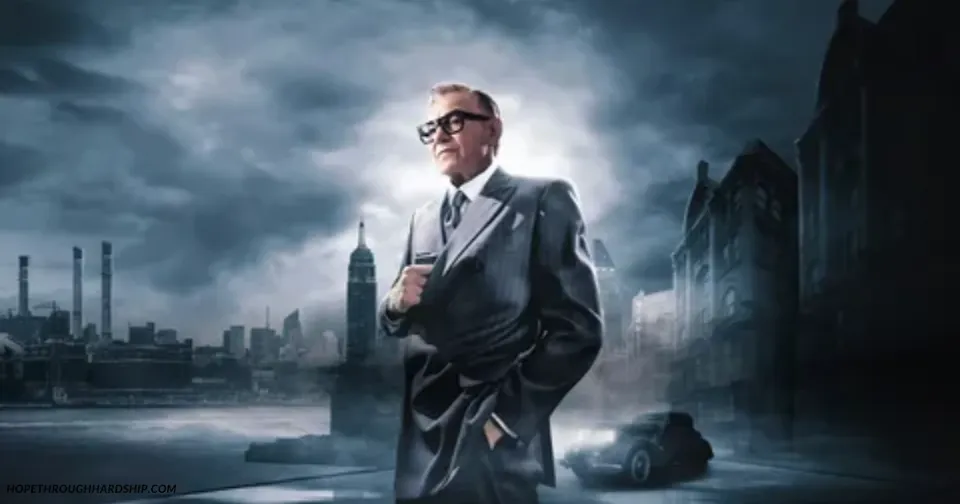Money speaks louder than violence. Nobody understood this better than the math genius who changed organized crime forever. When discussing criminal masterminds who revolutionized American organized crime, Meyer Lansky stands alone. He was the brilliant strategist who replaced brutality with calculated intelligence. Unlike traditional mob bosses who relied on intimidation, Meyer Lansky built an empire worth hundreds of millions. He used mathematical precision and financial innovation that changed criminal enterprise forever.

Understanding Meyer Lansky’s net worth requires examining how this Polish immigrant transformed completely. He went from Meier Suchowljansky to America’s most sophisticated financial architect of organized crime. Some estimates placed his wealth at $600 million. By the end of the 1960s, Meyer Lansky’s net worth was over $300 million. His revolutionary approach to money laundering changed everything. Casino operations and international banking created sustainable revenue streams. These outlasted violent competitors completely. The accounting genius behind numerous criminal enterprises, Lansky demonstrated something important. Intelligence could generate more lasting wealth than traditional strong-arm tactics ever achieved.
From Polish Immigrant to America’s Financial Wizard
Meier Suchowljansky arrived on American shores carrying dreams bigger than his childhood poverty. Born in 1902, the future Meyer Lansky quickly discovered something important about survival. Life in New York’s Lower East Side required more than honest work. It demanded street intelligence and mathematical precision. His natural ability with numbers distinguished him from neighborhood thugs completely. These thugs focused on immediate gratification rather than strategic planning.
The transformation from immigrant child to financial mastermind began early. Young Lansky recognized patterns in gambling, lending, and protection rackets that others missed entirely. His partnerships with Benjamin “Bugsy” Siegel and Lucky Luciano weren’t based on violence. Instead, they were built on complementary skills that created powerful criminal enterprises. While associates relied on intimidation, Lansky preferred something different. He used calculated risk assessment and mathematical probability to maximize profits while minimizing exposure.
Early experiences taught Lansky that sustainable criminal success required several key elements. These included legitimate business fronts, political connections, and sophisticated accounting methods. He understood that traditional mob violence attracted unwanted attention from law enforcement agencies. Meanwhile, subtle financial manipulation could operate indefinitely without detection. This intellectual approach to organized crime became his trademark strategy. It enabled him to accumulate unprecedented wealth through systematic planning rather than chaotic brutality.
Building the Mathematical Empire of Organized Crime
Traditional organized crime focused on territorial control through violence. But Meyer Lansky revolutionized criminal enterprise by treating illegal activities differently. He approached them as sophisticated business ventures requiring professional management. His casino operations extended from illegal gambling halls in New York to luxurious establishments elsewhere. These included Miami, Las Vegas, and Cuba. Lansky developed a gambling empire that stretched around the world. He owned points (percentages) in casinos in Las Vegas, Cuba, Miami, and New Orleans.
The financial genius behind these operations involved complex systems. These money laundering schemes transformed dirty money into apparently legitimate business income. The process used multiple transactions across international borders. Lansky pioneered layering techniques that moved criminal proceeds through various channels. These included shell companies, Swiss banks, and legitimate enterprises. The process continued until their origins became virtually untraceable. His mathematical prowess helped uniquely legitimize gambling in Vegas. He allegedly skimmed profits, secreted funds in Swiss banks, laundered money, and evaded taxes.
Unlike contemporaries who hoarded cash, Lansky took a different approach. He avoided investing in flashy displays of wealth. Instead, Lansky reinvested criminal profits into expanding business networks. These generated compound returns over decades. His diversification strategy included hotels, restaurants, real estate, and legitimate corporations. These provided steady income streams independent of illegal activities. This approach created financial stability that survived many challenges. These included economic downturns, law enforcement crackdowns, and territorial disputes with rival organizations.
The Cuban Casino Revolution
Meyer Lansky’s most ambitious venture involved transforming Cuba completely. He turned it into America’s premier gambling destination during the 1950s. His close relationship with dictator Fulgencio Batista enabled unprecedented casino development. This catered to wealthy Americans seeking exotic entertainment experiences. The Havana operations generated enormous profits while establishing Lansky as something special. He became the preeminent casino architect in the Western Hemisphere.

Lansky’s gambling operations ran into a multimillion-dollar disaster with the Cuban Revolution of 1959. Fidel Castro nationalized all of Lansky’s casino interests on the island. This setback cost him millions but demonstrated his remarkable resilience and ability to adapt to changing political circumstances.
The Las Vegas Legacy
Meyer Lansky’s influence on Las Vegas transformed the desert town completely. He turned it into the world’s gambling capital through strategic investments and operational expertise. Few figures were as important to the early Mafia as Meyer Lansky. He owned hotels and casinos across America and even founded the Flamingo in Las Vegas. His mathematical approach to casino management maximized profits while creating sustainable business models.
The Vegas transformation demonstrated Lansky’s ability to legitimize illegal gambling through professional management. He used sophisticated marketing and political cooperation. His casino operations became templates for modern gaming industry standards. These continue to influence contemporary entertainment venues worldwide.
The Mystery of Hidden Wealth
Despite decades of federal investigations, authorities never definitively established Meyer Lansky’s net worth. His sophisticated financial networks concealed assets across multiple jurisdictions and corporate structures. By 1970, his total holdings were estimated at $300 million. The money was secreted in Swiss banks. However, the true extent of his wealth remained one of organized crime’s greatest mysteries.
Federal authorities claimed the mobster still had hidden wealth worth $300 million. But Lansky himself said he was nearly broke. This contradiction between public estimates and personal claims reflected his masterful ability. He could separate apparent poverty from actual financial resources. The wealth concealment techniques he developed became standard practices. Subsequent generations of white-collar criminals and tax evaders adopted them.

At the time of his death in 1983, Lansky left only $57,000 in cash. This is equivalent to $147,000 in 2023 terms. This modest inheritance mystified investigators who had spent decades tracking hundreds of millions in suspected criminal assets. His ability to maintain the appearance of limited wealth while controlling vast financial networks demonstrated something remarkable. It showed unprecedented sophistication in financial planning and asset protection strategies.
The discrepancy between estimated wealth and documented assets suggests something important. Meyer Lansky successfully implemented offshore banking strategies that predated modern international tax haven practices. His practices were several decades ahead of their time. His financial innovations influenced not only organized crime but also legitimate wealthy individuals. They sought sophisticated asset protection methods.

